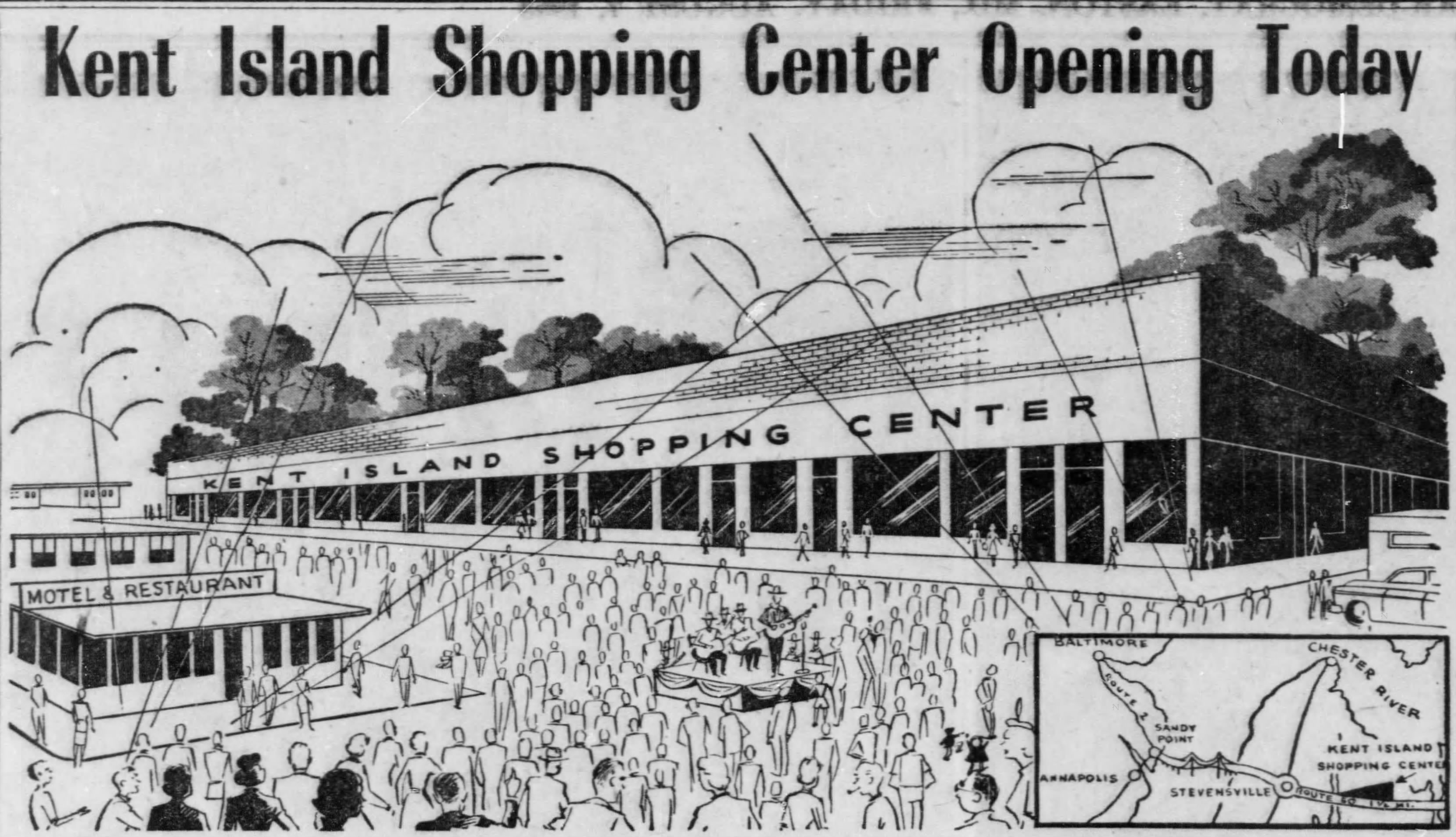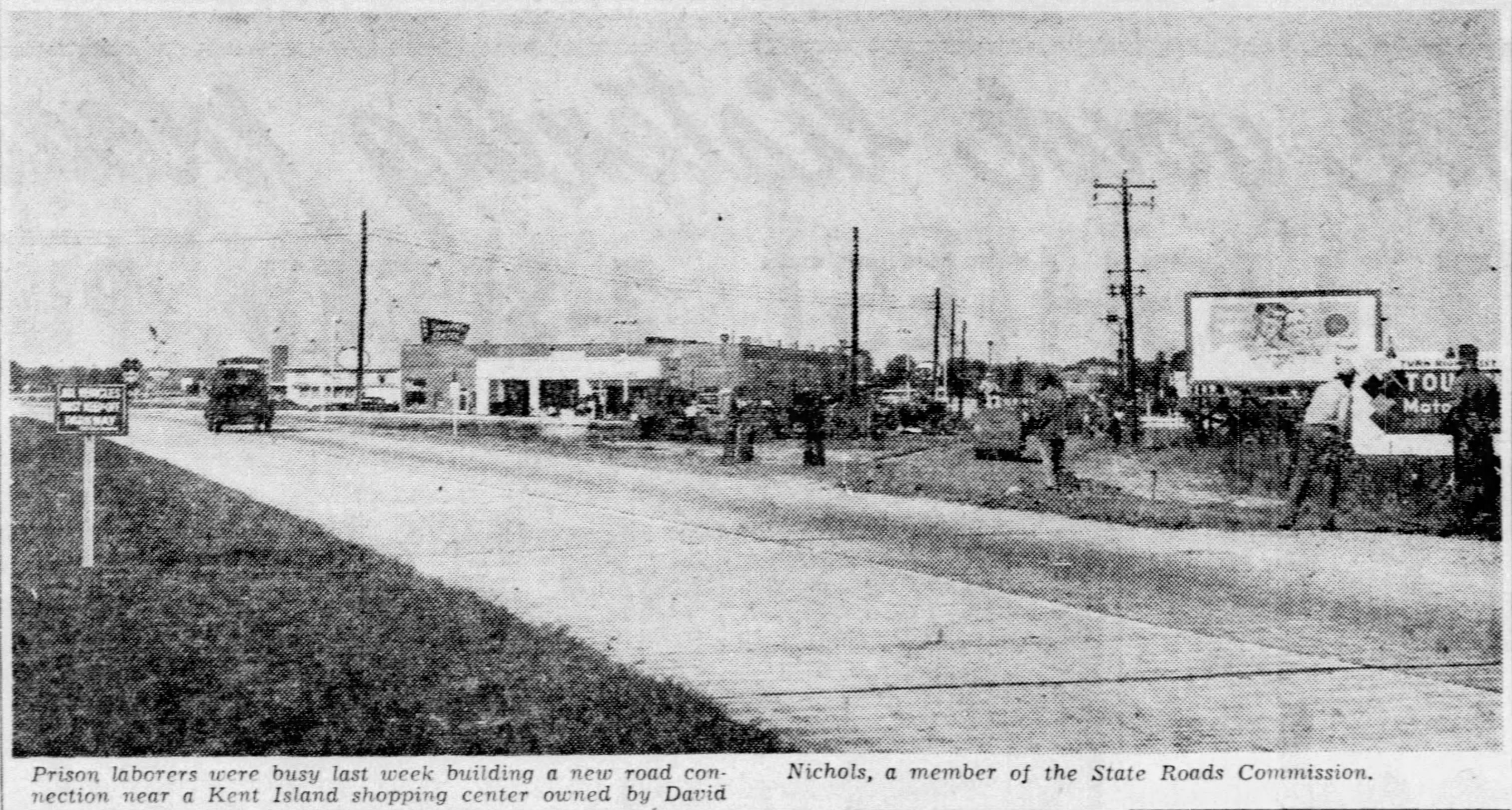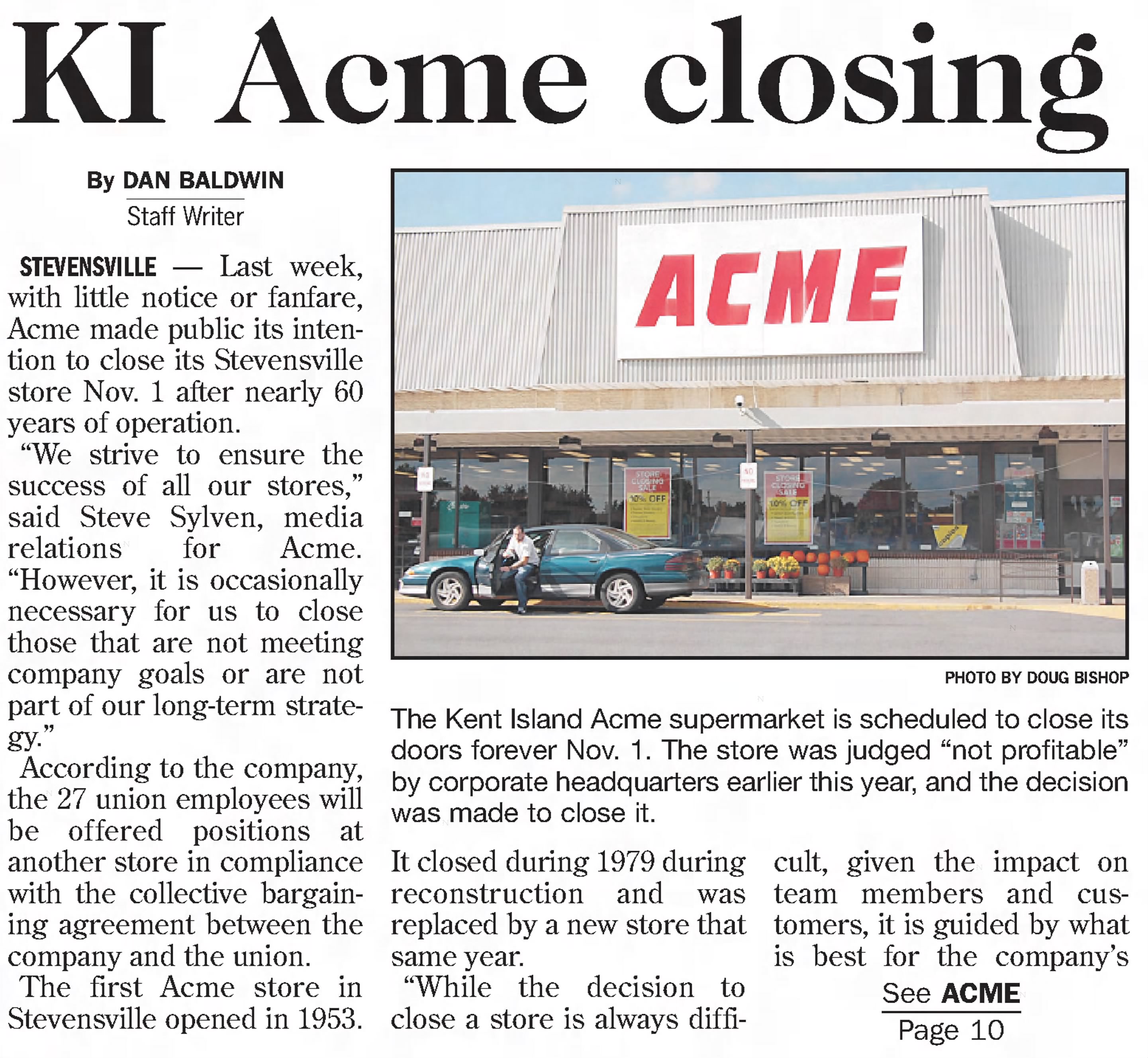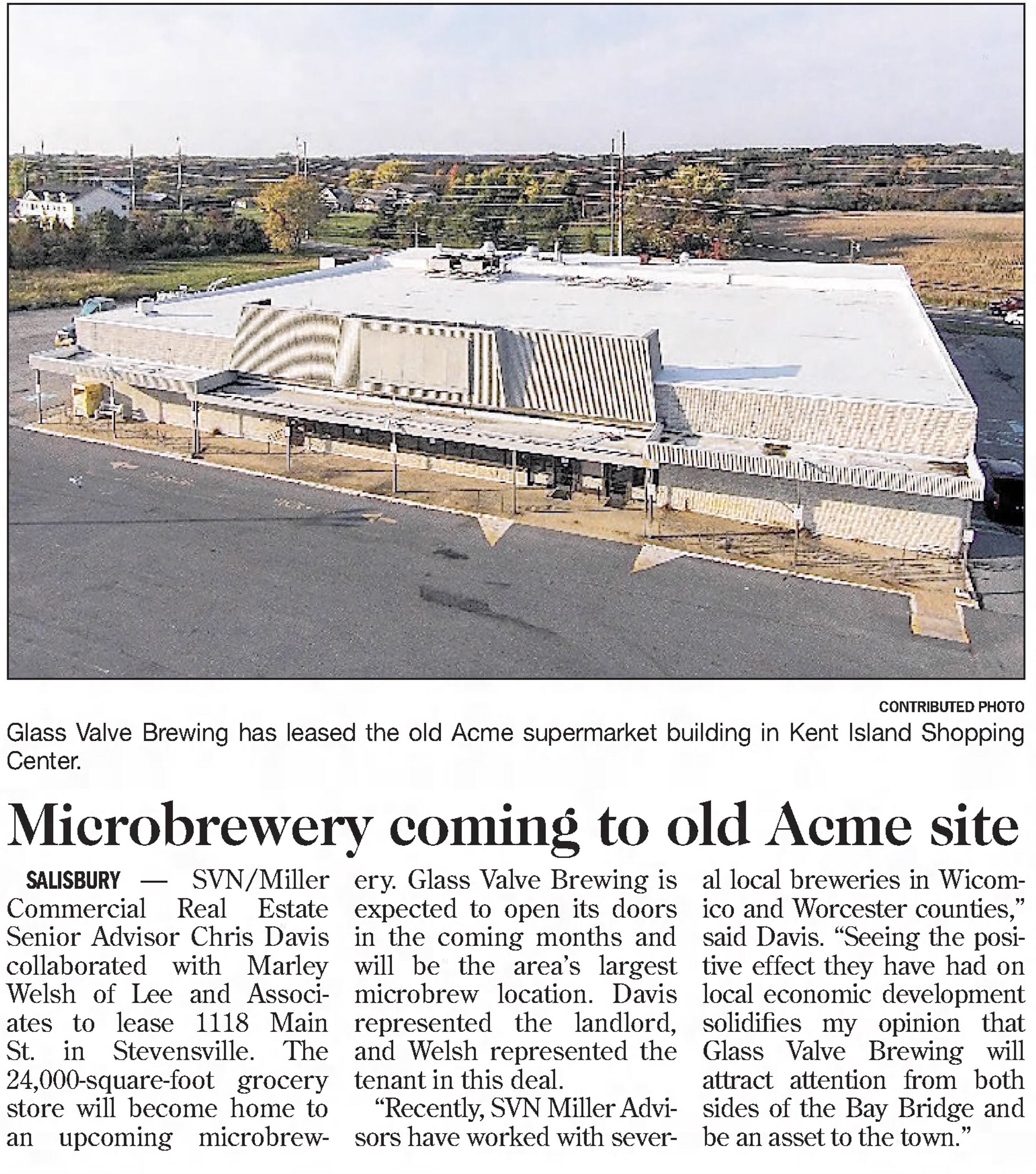
A Classic Building With A Cult Following
“Cult Classic Brewing Company isn’t just pouring beer—they’re continuing a legacy.”
- J. Coursey Willis
A brewery born in a grocery store. That’s how the owners and loyal fans describe Cult Classic Brewing Company—because it’s true. Kent Island’s first commercial brewery found its home in the former Acme Supermarket. But the surrounding land holds more history. And is Cult Classic really the first brewery on Kent Island? Let’s dig in.
On July 30, 1952, the world’s largest continuous over-water steel structure opened: the William Preston Lane Jr. Memorial (Bay) Bridge. It carried 1.1 million vehicles in its first year, opening the gateway to Maryland’s Eastern Shore and changing life on Kent Island forever. Developers saw what was coming—and none more so than David M. Nichols.
Nichols saw Kent Island as a suburban paradise waiting to rise from farmland. Before the bridge opened, he began buying up farms to build subdivisions like Kent Island Estates, Bay City, Romancoke, and Cloverfields. Armed with whiskey and well-timed duck hunts, Nichols charmed politicians to secure the infrastructure his dream required.
One of his most visionary projects was the Kent Island Shopping Center, situated on land he carved from the 217-acre Carville Tolson farm he bought in 1950. Most of the farm became the Harbor View community, nestled between Cox Creek and Cox Neck Road. However, Nichols reserved 20 acres north of the newly built Route 50-301 for the shopping center—with direct access to the highway and Route 18.
The shopping center opened on August 7, 1953, with a two-day grand gala. Nearly 20,000 people flocked to the largest commercial development in the county, drawn by live music, prizes, and the excitement of new shops. Cowboy TV star Jimmie Short and the Silver Saddle Ranch Boys performed, broadcast by WNAV radio. Dignitaries praised the center as proof the Shore was keeping pace with the times.

The original shops included Blum’s Department Store, a beauty shop, barber shop, Acme Supermarket, Flohr’s Gift Shop, Gilden’s Jewelry Store, Dr. Dias’s dental office, Marty’s Cleaners, the Esso Service Station, Tourinns Motor Court, M&M Restaurant, Kent Package Liquors, and David M. Nichols & Company Realtors.
The Esso Service Station anchored the east end, where the First National Bank stands today. On the west end, where Cult Classic now brews its beer, stood the Tourinns Motel. Land west of the motel, bordering Cox Creek, remained part of the parcel but outside the center’s footprint. This area remained open, except for two buildings: the Kent Island Tire Company (later Willis Tire & Auto) and the building that now houses Clark’s Landing Yacht Sales.
By 1959, the motel complex owners rebranded it as the Islander, a name that older locals fondly remember. The motel comprised three buildings: two running parallel where Cult Classic stands today and one perpendicular through what is now Hardee’s. Its main office stood where the brewery’s highway L.E.D. sign proudly flickers.
New businesses continued to arrive. On September 1, 1953, one of the most beloved additions opened its doors: Kent Island Pharmacy. Operated by Charles “Gil” Dunn—better known as Doc—the pharmacy served the community for over 40 years, becoming a cornerstone of island life. Doc cemented the pharmacy’s place as a trusted local business, embodying the spirit of service that helped anchor the shopping center in the hearts of Kent Island’s residents.
By March 1968, my relative Oscar “Jinx” Legg had opened Jinx’s Liquors in the former Kent Package Liquors space. I remember as a kid going into the back room, where Jinx, my grandfather, and others would sit around and tell stories while sipping on Kent Island Iced Teas. That’s a gussied-up Crown Royal and Coke for the uninitiated. Many islanders had a taste for Canadian whiskeys like Crown Royal—a tradition that traces back to Prohibition, when bootleggers smuggled whiskey in from the north.

Cracks showed within a year of opening as raw sewage pooled around the site, exposing the island’s shallow water table. Nichols’s rapid development overwhelmed the utilities, which couldn’t handle the sudden influx of residents and businesses. Like many developers, he failed to invest in upgrades, leading to neglect flagged by the Maryland State Health Department.
Financially, Nichols was sinking. The weight of high development costs, failed investments, and dwindling political support proved too much to bear. In 1961, the David M. Nichols Company declared bankruptcy, buried under $1.3 million in debt. Aurora Federal Savings & Loan took control of the Kent Island Shopping Center, closing the Islander complex—including the motel, Islander Hunt Club, tavern, dining room, and lunchroom—in January 1962. On February 8, 1963, they auctioned off the shopping center in three sections, marking the final chapter of Nichols’s ambitious vision.
Despite early setbacks, the shopping center found its footing. The Lions Club’s Halloween Parade, which began in 1963, drew 500 people by 1969, delighting young and old alike. In 1975, the parking lot served as the eastern hub for the first Chesapeake Bay Bridge Walk, an event that attracted thousands. Around the same time, the Islander began offering long-term rentals, with twin rooms priced at $100 a month and singles at $75. Meanwhile, a 2,500-square-foot space in the center leased for just $275 per month—a steal, even back then.
By late 1976, Pizza Hut and Hardee’s were set to open alongside the Islander. William Bittorf, the new owner, demolished parts of the complex to make room for these new tenants, sparking rumors about its future.
In 1977, two bold proposals emerged to reshape the shopping center. The first was a $2.5 million proposal for a 12-store shopping mall, spearheaded by the Bay Corporation. The open-air complex, planned next to the existing shopping center, would include a supermarket, discount drug store, office spaces, and specialty shops. Acme Markets came in with the second proposal. They planned to replace their current store at the west end of the shopping center, now the trailer parts store, with a larger, more modern supermarket where the Islander stood.
While both projects promised jobs and new retail opportunities, they ran into infrastructure challenges. The mall’s development hinged on expanding sewage treatment capacity, raising concerns about the impact on nearby shellfish beds. In the end, the mall project fell through, but the new Acme store pushed ahead, marking the final chapter for the Islander.
On April 16, 1977, the Islander met its fiery end in a controlled burn, clearing the way for the new Acme. Led by Kent Island Fire Chief Duke Moore, six volunteer fire companies managed the blaze, which raged for over three hours and sent thick smoke billowing across the landscape.
My father, Bob Willis, tells the story differently. He swears his band played the motel’s final show the night it burned. “We burned the place to the ground,” he likes to say—turning the end of the Islander into a family legend.
On January 15, 1979, Acme opened its new 24,184-square-foot store, bringing modern convenience to Kent Island with a full-service deli, fresh seafood, and a grand gift section. Familiar faces like Ronald Horney, Walter Joiner, Danny Foster, and William Bradley Lewis added a personal touch, turning routine errands into small moments of connection.
Acme had served Kent Island for nearly 60 years—33 years in its new building—before closing its doors for good on November 1, 2012. The closure was part of a corporate decision, citing that the store was not meeting company goals or fitting into their long-term strategy. The closure drew mixed reactions—some welcomed the change because of cleanliness concerns, while others lamented the loss of a community staple and local landmark.

Though Acme’s closure marked the end of one era, it paved the way for another. In 2018, Brooks and Jesse McNew—owners of Annapolis Home Brew—signed a lease for the former Acme building, ready to transform it into Kent Island’s first commercial brewery.
Armed with their Class “D” Beer Tavern License, Cult Classic Brewing Company was born. The McNew brothers built more than a brewery; they envisioned a community hub—a space where locals and visitors could gather over music, food, and fellowship, much like the Islander had once been. With roots in European beer styles, high-gravity creations, and hop-forward brews, Cult Classic offers something for every palate, while weekly events and live performances keep the venue alive with energy.
From the start, co-owner and marketing force Rohry Flood has shaped the brewery into a cornerstone of Kent Island’s culture. Cult Classic has become more than just a place to grab a drink—it’s where musicians, artists, and neighbors meet to connect, share stories, and create new traditions. Through events like the Dark Hollows Haunted Trail: Reanimated and partnerships with Historic Kent Island, Inc., the brewery honors the island’s heritage while forging its future.
Cult Classic isn’t just pouring beer—they’re continuing a legacy. The story of this space has always woven music into it, from the lively performances of the Islander to the current bands taking Cult’s stage. “We’re here to make sure people not only enjoy our beer but also feel like they belong,” Brooks McNew said—a mission that echoes through every corner of the brewery.
Is Cult Classic Kent Island’s first brewery? It’s complicated. Commercially, it holds the title. But given the island’s long history, dating back to the English settlement in 1631, it’s likely that early taverns brewed their own beer. With limited access to outside goods and Jamestown 175 miles away by boat, brewing wasn’t a luxury—it was survival. While Cult Classic may not be the first brewery on the island, it is the first legal commercial brewery—marking a new milestone in Kent Island’s evolving narrative.
Cult Classic Brewing Company stands as a bridge between Kent Island’s past, present, and future—a place where memories aren’t just preserved but made anew. The building that once housed Acme Supermarket has become more than a brewery; it’s a space where creativity, community, and craft intersect. Through live music, local events, and partnerships, Cult Classic continues to write new chapters in the island’s story. It’s not just about preserving the past—it’s about living it. In every pint poured and song played, the spirit of Kent Island endures, reminding us that history is not just what we remember—it’s what we create in the spaces where stories unfold.

